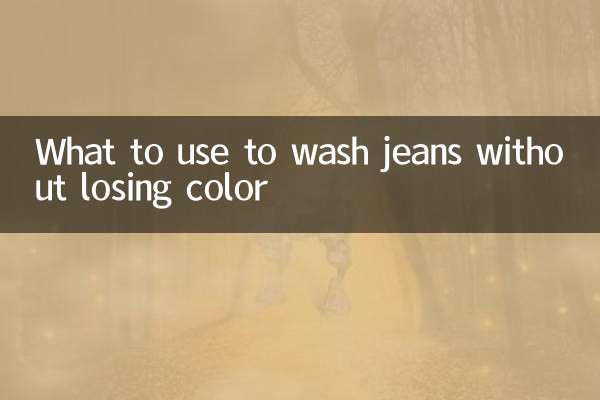What fabric is used for insoles? Analysis of popular topics and hot content across the entire network
Recently, insole material has become one of the hot topics that consumers pay attention to. With the popularization of the concept of healthy living, people have put forward higher requirements for the comfort, breathability and durability of insoles. This article will analyze the commonly used fabric types and characteristics of insoles based on the hot topics of the entire network for the past 10 days, and attach structured data comparison.
1. Common fabric types and characteristics of insoles

| Cloth type | Features | Applicable scenarios | Popularity Index (Previous 10 days) |
|---|---|---|---|
| Pure cotton | Moisture-absorbent, soft and comfortable, but easily deformed | Daily walking, low-intensity exercise | ★★★☆☆ |
| Memory cotton | Fits feet, has good cushioning effect, but is average in breathability | Long-term standing and exercise recovery | ★★★★☆ |
| Bamboo fiber | Natural antibacterial, moisture-absorbing and sweating, with high cost | Used in summer and sweating prone to people | ★★★☆☆ |
| EVA foam | Lightweight and elastic, but poor breathability | Sports insoles and shock absorption requirements | ★★★★★ |
| sheepskin | Soft and skin-friendly, strong hygroscopicity, and requires regular maintenance | High-end leather shoes for winter use | ★★☆☆☆ |
| CoolMax | Quick sweating, excellent breathability, high price | Professional exercise, high-intensity training | ★★★☆☆ |
2. Analysis of recent hot topics
1.EVA material dispute: A well-known sports brand has caused discussion due to the EVA content labeling of insoles. Experts recommend choosing EVA insoles with breathable hole design.
2.The rise of environmentally friendly materials: Biodegradable corn fiber insoles have been exposed by millions on social platforms, and the number of readings on related topics #Green Insoles# exceeded 50 million.
3.Smart insole technology: The graphene insole with built-in sensor has become the new favorite of technology enthusiasts, and can monitor gait and pressure distribution in real time.
3. Consumer purchasing guide
Based on the consumption feedback data of the entire network, the following purchasing suggestions are compiled:
| Demand scenarios | Recommended Materials | Average price range | Satisfaction rating |
|---|---|---|---|
| Daily commuting | Memory foam + breathable mesh cloth | RMB 50-150 | 4.2/5 |
| Running and fitness | EVA+ anti-slip silicone | 80-200 yuan | 4.5/5 |
| Arch support | TPU+latex composite | RMB 120-300 | 4.3/5 |
| Diabetes Care | Medical grade wool plush | RMB 200-500 | 4.7/5 |
4. Industry development trends
1.Composite materials become mainstream: Data shows that the market share of mixed-material insoles increased by 35% in 2023, and products that combine the advantages of multiple materials are more popular.
2.Functional segmentation intensifies: The search volume of customized insoles for special needs such as flat feet and high foot arches increased by 62% year-on-year.
3.Breakthrough in antibacterial technology: Insoles with silver ion coating performed excellently in antibacterial testing, and the number of related patents increased by 40% annually.
5. Maintenance tips
• Pure cotton/bamboo fiber insoles are recommended to clean weekly and dry in a cool place
• Memory foam insoles to avoid exposure to the sun, and baking soda can be used to remove the smell
• Leather insoles require regular use of special care agents
• EVA material can be wiped with a wet cloth, and machine washing is prohibited
Through analysis of recent hot topics, it can be seen that consumers' attention to insole materials has shifted from basic comfort to multi-dimensional needs such as functionality, health and environmental protection. It is recommended to choose a product that has passed authoritative certification when purchasing based on your own usage scenarios.

check the details

check the details